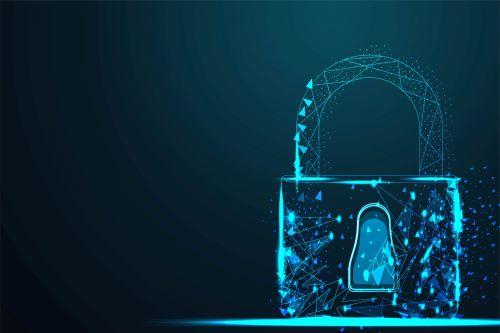
CFCs leverage security systems to deploy advanced threat detection and response tools while providing real-time threat intelligence and analysis.
During the third industrial revolution, the proliferation of digitalization and the widespread penetration of the internet brought about a new set of challenges. Introducing fresh vulnerabilities into the ecosystem had spawned novel forms of attacks previously nonexistent. These encompassed malicious viruses, zero-day exploits, DDoS attacks, and more.
In response to these growing threats, a demand arose for a comprehensive and centralized security infrastructure for monitoring, analyzing, and responding to such incidents. This demand led to the inception of SOC, which was initially leveraged for defense purposes and facilitated centralized monitoring, handled virus alerts, and countered intrusion attempts with vigilance.
Equipped with traditional technologies, these Centers were primarily reliant on signature-based analysis.
SOCs had to evolve and incorporate advanced tools for monitoring security operations, such as SIEM solutions, as the cybersecurity landscape transformed.
These additions bolstered their defensive capabilities against Advanced Persistent Threats and enabled them to analyze malware instances. Furthermore, the SOC adapted to fulfill the regulatory requirements of the dynamic cybersecurity ecosystem.
Challenges with legacy SOCs
Once the stalwarts of defense, these traditional SOCs now have to grapple with an ever-expanding attack surface, where the threats are more sophisticated and frequent. As cyber threats evolve, mutate, and proliferate, these conventional methods are struggling to keep pace. By relying on a reactive approach with signatures, they limit their ability to expose only the known adversaries. This method seems a tad outdated, with a predictable, cookie-cutter template lacking the versatility to face the modern-day fluid threat landscape. Additionally, manually driven tasks contribute to staff exhaustion and burnout, which is detrimental to cyberattacks' onslaught. All these factors place legacy SOCs on shaky grounds making their limitations very evident. On the other hand, cybercriminals are exploiting advanced technologies pushing organizations into the crosshairs of cyber-attacks. The rise in cloud adoption, growing complexities of the supply chain, and the shortage of cyber defenders and not helping either. Navigating these risky waters of cyber threats is a growing concern for organizations prompting them to invest in multiple security applications to protect their valuable assets and reputation from potentially devastating losses.
Cyber Fusion Centers (CFCs) – The next frontiers in security
Only a paradigm shift in the battleground in how SOCs operate can help organizations escape this intricate maze. A new, proactive, holistic, and collaborative approach that blends proactive threat intelligence, detection, and response is suited to address the challenges of today’s cybercriminal activities. This significant shift in the cybersecurity space is marked by the introduction of CFCs, where the security magic takes place, outdoing the reactive practices of legacy SOCs. A CFC combines security operations from diverse sources like threat intelligence feeds, incident response plans, global intelligence, business units, and internal and external stakeholders. The primary objective of a CFC is to proactively predict, detect, prevent, and respond to cyber threats in a coordinated and preemptive manner. With intelligence-driven analysis and customized incident response procedures, CFCs create a holistic defense strategy to keep modern-day cyber-attacks at bay.
As the next-gen SOC, CFCs surpass traditional centers by providing enhanced coverage, insights into data value, and constructing business-centric threat models. The true magic of a CFC is present in its proactive approach, stepping beyond mere reactivity to track
adversary behavior and actively explore security incidents in real-time. Unlike the false alarms often associated with legacy SOCs, CFCs generate high-fidelity actionable insights offering contextualized threat intelligence that delves into the human element behind every incident. They offer intelligence-driven detections enabling in-depth root-cause analysis and sometimes even detect threats before the systems are breached. Additionally, CFCs conduct advanced incident scoping and remediation involving internal and external stakeholders. Based on actionable threat intelligence, CFCs implement essential Advanced Threat Protection measures before an attack occurs. This proactive approach to breach and incident response management strengthens their capabilities to stay ahead of cyber threats and ensures a robust defense posture for organizations.
The CFC advantage – empowering modern cybersecurity
In a traditional SOC, the reliance on human intelligence is very pronounced, while the CFC remarkably limits this dependence through advanced automation and orchestrated processes. This results in streamlined threat detection, response, and mitigation, minimizing the need for manual intervention while enhancing effectiveness against modern-day sophisticated threats. By integrating appropriate technologies and deploying a select cadre of adept engineers, the focus shifts from handling a hundred thousand to skillfully addressing around 100 critical and qualified incidents.
The CFC mindset is rooted in leveraging reusable assets centered around specific use cases and automated workflows. This approach facilitates the replacement of outdated technologies with newly introduced ones from the market, thereby optimizing operations. The CFC’s integrated approach and proactive strategies optimize security operations, reducing the dependency on human expertise while enhancing overall effectiveness in addressing the ever-evolving threats.
Automation and orchestration take center stage in CFCs, streamlining repetitive tasks and accelerating incident response, enabling security analysts to focus on high-priority assignments. A successful CFC strategically deploys cutting-edge security tools and services from industry leaders, strengthening its cybersecurity arsenal. In a digital age teeming with cyber threats, CFCs are beacons of strength, leveraging intelligence, innovation, and collaboration to carve a secure cyber landscape.
In this dynamic landscape of ever-evolving cyber threats, transitioning from legacy SOCs to the cutting-edge domain of modern CFCs is critical for organizations aiming to fortify their cybersecurity defenses. This shift demonstrates the industry’s unwavering commitment to outpace threat actors and ensures heightened productivity and cost savings in today’s digital age. Embracing this change is not an option for organizations but a strategic imperative to stay ahead of the curve in the face of unyielding cyber challenges. Organizations can also transition to CFCs by harnessing the expertise of Managed SOC Providers or opting for Security Operations-as-a-Service, to safeguard their infrastructure and IT systems.
The author is a VP - International Business & Global Lead for the Integrated Cyber Threat Management Practice, Inspira Enterprise.
Image Source: Freepik

 In
In
Add new comment